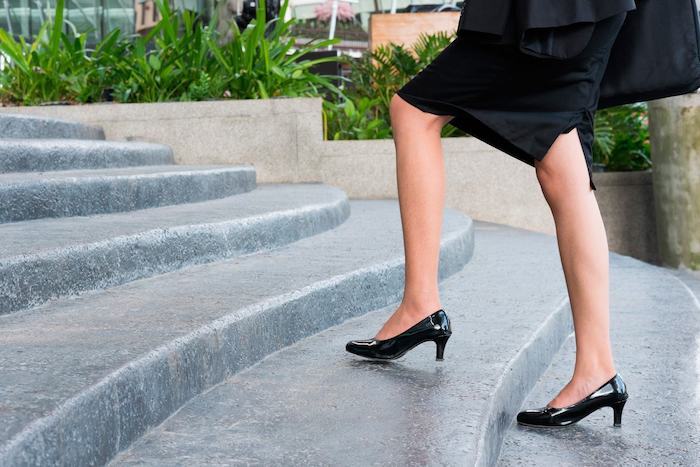
14 Apr Why High Heels are Bad for Your Feet
Fact: Women are four times more likely to have problems with their feet than men.
Why?
The culprit is the type of footwear women wear. Whether it’s for a night out or regular work wear, women tend to wear shoes with high heels and pointed toes. While these might look great, they’re really bad for a woman’s feet, leading to all sorts of foot problems.
Common problems caused by women’s footwear
? Toe injuries such as bunions, hammertoes, ingrown toenails and corns
? Morton’s Neuroma
? Plantar Fasciitis (heel pain) and Achilles tendonitis
? Ankle sprains and fractures
? Posture and gait problems
The problem with high heels
In addition to restricting the foot with a pointed toe, wearing high heels also increases the weight on the area that is restricted, so they not only crush your toes, but also put weight on them. If you wear high heels regularly, you’ve probably got corns and calluses. These thickened layers of dead skin on the toes are the body’s way of defending your feet. Another problem with wearing high heels is that your Achilles tendon will shorten, which can result in pain when wearing low-heeled shoes or walking barefoot. The increased pressure on your heels from wearing high heels can contribute to plantar fasciitis where you feel pain or a burning sensation/ache in your heels.
Our Podiatrists suggest these solutions
- Choose a lower heel. Heels under two inches high are best for regular wear. If you want to go higher, consider heels that have a platform on the forefoot. This increases height while causing less distortion to the foot.
- Make sure your shoes fit correctly. A good pair of shoes will be comfortable when standing and won’t allow your foot to slide forward when walking. Rounded or open toes are generally better than pointed toes and shoes with an ankle strap give you more support.
- Measure your feet regularly. Your foot size changes over the years, especially after having children. Have your feet measured when you’re buying shoes, and check the length as well as the width.
- Take a break. Try to avoid wearing heels to an occasion that requires long periods of walking or standing. When you are sitting, slip off your heels and stretch your feet. It is important to allow your feet to ‘rest’ after wearing high heels. If you have to wear high heels, wear sneakers to and from your destination.
- Do stretching exercises. Follow these exercises to stretch out your Achilles tendon, as demonstrated by our podiatrist Russel.
- Add padding. Apply foam or gel padding to any area where the shoe rubs against your foot. Also try cushioned insoles to ease pressure on the forefoot.
Do you wear high heels and suffer from plantar fasciitis, bunions, or achilles tendonitis? Visit our podiatrists who get your feet measured correctly and ensure you wear shoes that fit correctly. Give our clinics a call on the numbers below.
Bondi Junction: 9386 5400
Barangaroo: 8599 9811
St Ives: 9440 4600



